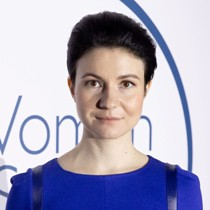Fiber Laser Sources II
A special issue of Fibers (ISSN 2079-6439).
Deadline for manuscript submissions: closed (31 December 2023) | Viewed by 9143
Special Issue Editor
Interests: fiber lasers and amplifiers; special mid-ir nonlinear fibers; ultrafast fiber metrology; fiber-based microresonators
Special Issues, Collections and Topics in MDPI journals
Special Issue Information
Dear Colleagues,
Fiber lasers and amplifiers are increasingly becoming the optical source of choice for a large range of scientific and industrial applications, thanks to their inherent technological advantages and great possibilities of controlling properties of light. Great attention is devoted to the design and development of special fibers, which allow operation in specific spectral ranges, including the mid-IR range. The purpose of this Special Issue is to present state-of-the-art research in the area of fiber lasers and amplifiers through a collection of original research, as well as review papers, ranging from fundamental physics to applications.
The scope of this Special Issue covers all aspects of theoretical, numerical, and experimental studies of fiber lasers and amplifiers, including, but not limited to, the following:
- Fiber lasers;
- Fiber amplifiers;
- Raman fiber lasers;
- Brillouin fiber lasers
- Distributed feedback fiber lasers;
- Tunable and multiwavelength lasers;
- Fiber design and fabrication;
- Multicore fibers;
- Laser architectures and pumping methods;
- Nonlinear dynamics of fiber lasers;
- Ultrafast fiber sources;
- Fiber frequency comb sources;
- Fiber supercontinuum sources;
- Photonic crystal fibers;
- Fiber laser pumped frequency conversion schemes;
- Mid-IR fiber lasers;
- Chalcogenide fibers;
- Tellurite fibers;
- Fluoride fibers;
- Advances in fiber laser characterization methodologies;
- Applications including telecommunications, sensing, generation of non-classical states of light, and others.
Dr. Elena Anashkina
Guest Editor
Manuscript Submission Information
Manuscripts should be submitted online at www.mdpi.com by registering and logging in to this website. Once you are registered, click here to go to the submission form. Manuscripts can be submitted until the deadline. All submissions that pass pre-check are peer-reviewed. Accepted papers will be published continuously in the journal (as soon as accepted) and will be listed together on the special issue website. Research articles, review articles as well as short communications are invited. For planned papers, a title and short abstract (about 100 words) can be sent to the Editorial Office for announcement on this website.
Submitted manuscripts should not have been published previously, nor be under consideration for publication elsewhere (except conference proceedings papers). All manuscripts are thoroughly refereed through a single-blind peer-review process. A guide for authors and other relevant information for submission of manuscripts is available on the Instructions for Authors page. Fibers is an international peer-reviewed open access monthly journal published by MDPI.
Please visit the Instructions for Authors page before submitting a manuscript. The Article Processing Charge (APC) for publication in this open access journal is 2000 CHF (Swiss Francs). Submitted papers should be well formatted and use good English. Authors may use MDPI's English editing service prior to publication or during author revisions.
Keywords
- fiber lasers
- fiber amplifiers
- raman fiber lasers
- brillouin fiber lasers Distributed feedback fiber lasers
- tunable and multiwavelength lasers
- fiber design and fabrication
- multicore fibers
- laser architectures and pumping methods
- nonlinear dynamics of fiber lasers
- ultrafast fiber sources
- fiber frequency comb sources
- fiber supercontinuum sources
- photonic crystal fibers
- fiber laser pumped frequency conversion schemes
- mid-IR fiber lasers
- chalcogenide fibers
- tellurite fibers
- fluoride fibers
- advances in fiber laser characterization methodologies
- applications including telecommunications, sensing, generation of non-classical states of light, and others





